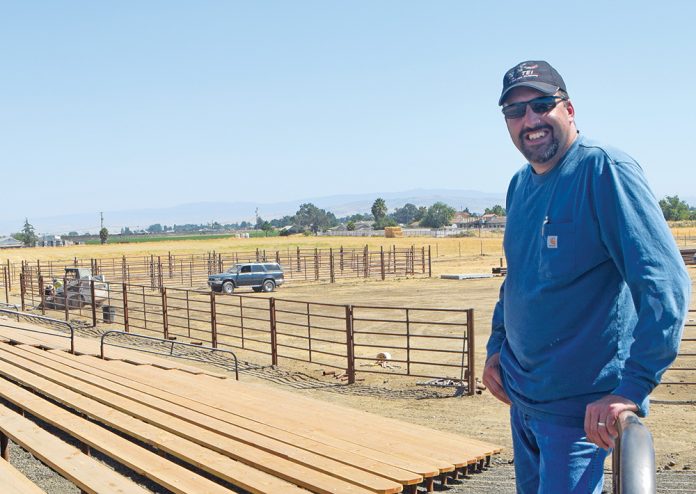If you build it, they will ride.
The work toward the re-established Gilroy Rodeo is well underway,and on the ranch owned by rodeo co-founder Erik Martin.
For Martin, working to clear permits with Santa Clara County has been as rough as riding a bucking bronc.
Martin’s ranch, an old dairy farm, is on Gilroy’s eastside on Ferguson Road, well out in the country. Up front is business as usual. About 200 yards into the ranch, the growing rodeo arena comes into view.
The arena itself, 310 feet by 150 feet, is ringed by 7-foot-tall iron rail panels sunk into the ground. The arena itself is about three-quarters surrounded by bench seats that are anchored into the ground and ascended by a graded slope 17 rows high. Both the panels and the seats, which can accommodate more than 5,000, are intended to be permanent fixtures, just like the rodeo itself, which Martin hopes will become a new Gilroy tradition.
The rodeo is intended to be self-sustainable. Tickets will be $20 per person, free for kids under 12, with free parking. There will be food, beer sales and merchandise bearing the Gilroy Rodeo logo, a silhouetted cowboy riding a bucking horse.
“It must be viable to live; we cannot depend on donations to survive,” Martin, 43, said.
Martin, along with a team of volunteers and employees who work for his construction company, started work on the arena in January. It’s a five-days-a-week job.
There will be several events at the rodeo. The rough stock competition, bull riding and bucking bronc, are expected to be the real crowd pleasers. To the side of the main arena, a smaller arena, 96 feet wide by 57 feet long, will feature events depicting what happens at a working ranch.
Social media has been crucial to spreading the word on the rodeo. The rodeo committee organized via Facebook, and within the last 28 days, the Gilroy Rodeo website has had more than 21,000 views. The rodeo has also been visible at parades, and starting July 12, rodeo merchandise will be available to buy at Downtown Live in the downtown.
The rodeo will also feature exhibitions of western Mexican traditions, such as charros dressed in traditional Mexican horseman’s clothes, trick roping and Mexican side-saddle riding.














